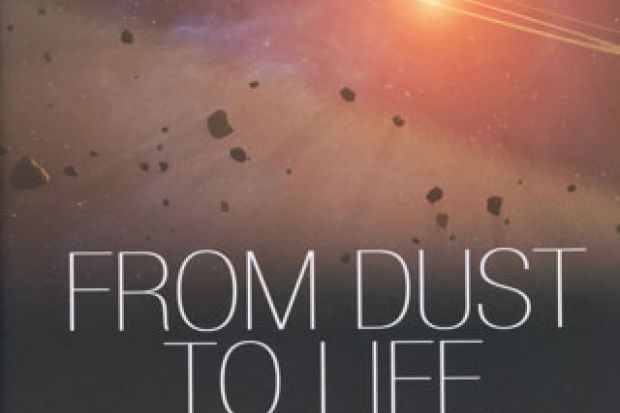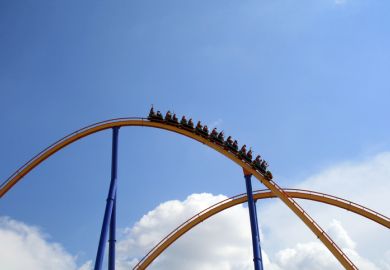The landing last month of the Philae probe on the nigh-unpronounceable comet Churyumov-Gerasimenko has had us all looking towards the skies in awe. The human race has sent a craft hurtling through space, sling-shotting it around Mars once and Earth three times, to rendezvous with an icy traveller from the outer reaches of the solar system.
Our hope is that a greater understanding of the physics and chemistry – unfortunately probably not the biology – of this comet will tell us more about our history: how the planets, moons, asteroids, comets and other bodies formed from a swirling cloud of dust and gas. This is also what John Chambers and Jacqueline Mitton set out to describe here: our current understanding of where we came from, and where we are going.
From Dust to Life provides both a historical perspective on how our understanding of the cosmos has evolved, and a description of the current state of the art. The authors also acknowledge that there are still enormous gaps in our knowledge, and limitations to the amount we can truly “know” and how much we have to guess.
The main message is that the seemingly eternal motion of the planets is an illusion. Our solar system is a dynamic and chaotic place, with some models having Jupiter casually wandering in towards the Sun and then back out, cutting a wide swathe through the asteroid belt and either flinging material out of the solar system altogether, or gathering it in and holding it close.
Another model has the giant planets performing an elaborate four-way tango in the outer reaches of the solar system, a gravitational tug of war that sends material flying in towards the Sun. This model could explain the “late heavy bombardment”, a period of time in which the inner planets were peppered with impacts, evidence of which we see in the craters of the Moon.
Aimed at a general audience, the book falls somewhat unhappily between levels suitable for the novice and for the specialist. Rotational inertia is mentioned casually as a confounding issue in early ideas about our solar system, but the idea is never really explained. I can understand why: it’s a concept that first-year physics students sometimes struggle with, but an analogy might have been useful here. The “main sequence” is cited, but given a casual mention in passing with assumed familiarity. The chapter entitled “Life” is brief, despite its prominence in the book’s title, and in essence amounts to a large shrug. And I am not at all convinced that it is necessary to provide absolutely all measurements in both metric and imperial units, down to the very last millimetre (0.04 inch).
That being said, for the interested amateur with a degree of familiarity with the topics under discussion, From Dust to Life furnishes a comprehensive overview of current models for the formation of the solar system. The authors’ description of all the things we still don’t understand is also genuinely exciting. The planets arose from dust, but we haven’t yet figured out how the dust sticks together: in our hands, dust grains just bounce off each other. We don’t yet understand why the different planets are the sizes they are. And we think we know what comets are made of and how they arose, but every measurement or observation yields new surprises.
Which brings us back to the Rosetta spacecraft and Philae, in their lonely exploration of Churyumov-Gerasimenko some 500,000,000km away. We eagerly await the revelations they have in store.
From Dust to Life: The Origin and Evolution of Our Solar System
By John Chambers and Jacqueline Mitton
Princeton University Press, 320pp, £19.95
ISBN 9780691145228 and 9781400848355 (e-book)
Published 3 December 2014
Register to continue
Why register?
- Registration is free and only takes a moment
- Once registered, you can read 3 articles a month
- Sign up for our newsletter
Subscribe
Or subscribe for unlimited access to:
- Unlimited access to news, views, insights & reviews
- Digital editions
- Digital access to THE’s university and college rankings analysis
Already registered or a current subscriber? Login





